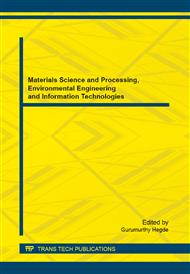p.679
p.685
p.691
p.698
p.706
p.712
p.718
p.724
p.733
Feature Extraction Method for Network Intrusion Detection Based on RS-KPCA
Abstract:
For the complexity and nonlinearity of the input characteristics in network intrusion detection system, a feature extraction method for network intrusion detection based on RS-KPCA is studied. Firstly, the Rough Set (RS) theory is used to select the valuable features, while the unnecessary features are removed. Then, the features of the intrusion detection sample data are extracted by the kernel principal component analysis (KPCA) algorithm. The number of new features is determined by the cumulative contribution rate. Simulation results show that this method can effectively remove the interference features, and has the advantages of obvious principal component feature and concentrated contribution rate, compared with PCA. Overall, the proposed method can effectively integrate the nonlinear features of the original data, reduce the dimension, and improve the intrusion detection performance.
Info:
Periodical:
Pages:
706-711
Citation:
Online since:
October 2014
Authors:
Price:
Сopyright:
© 2014 Trans Tech Publications Ltd. All Rights Reserved
Share:
Citation:


